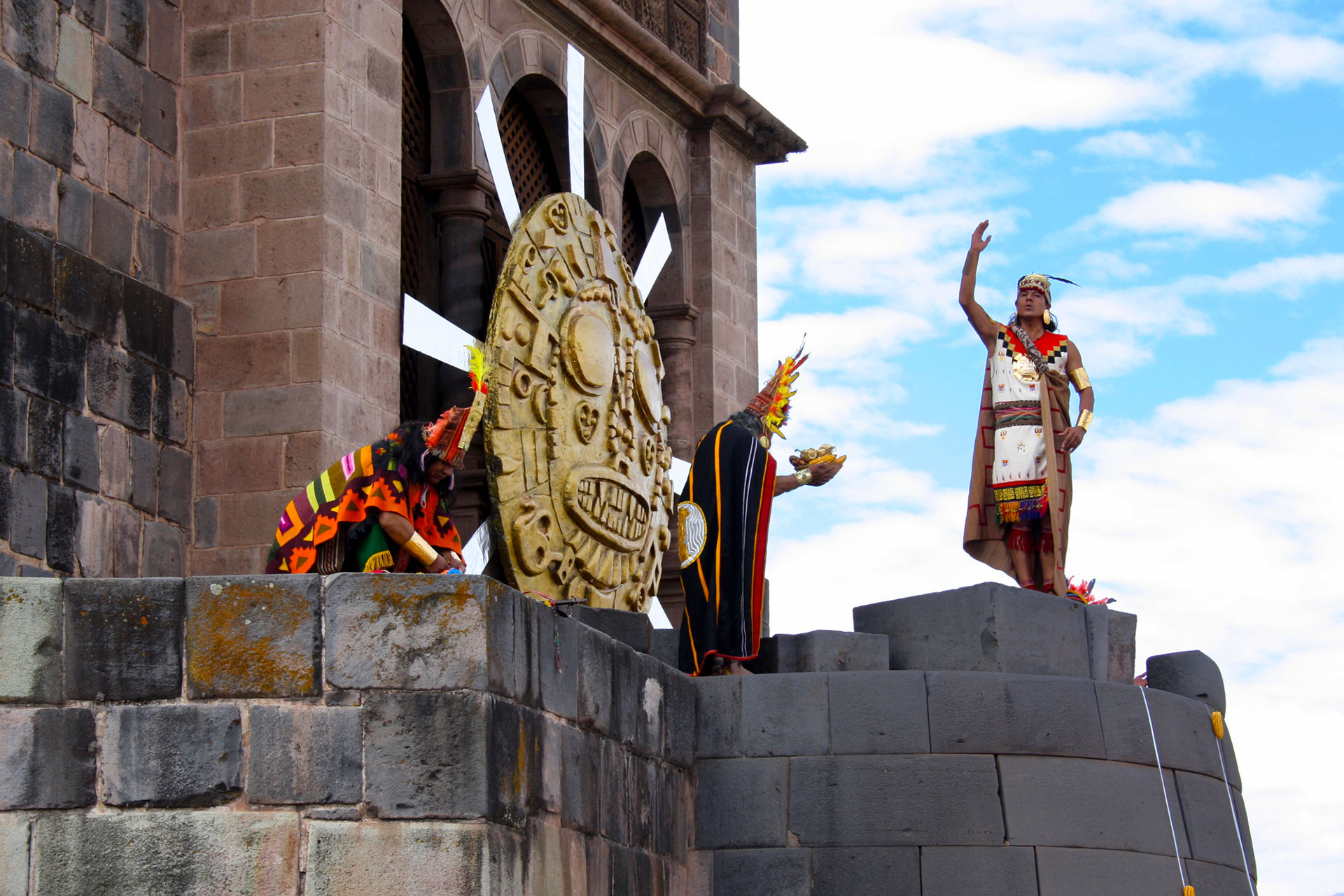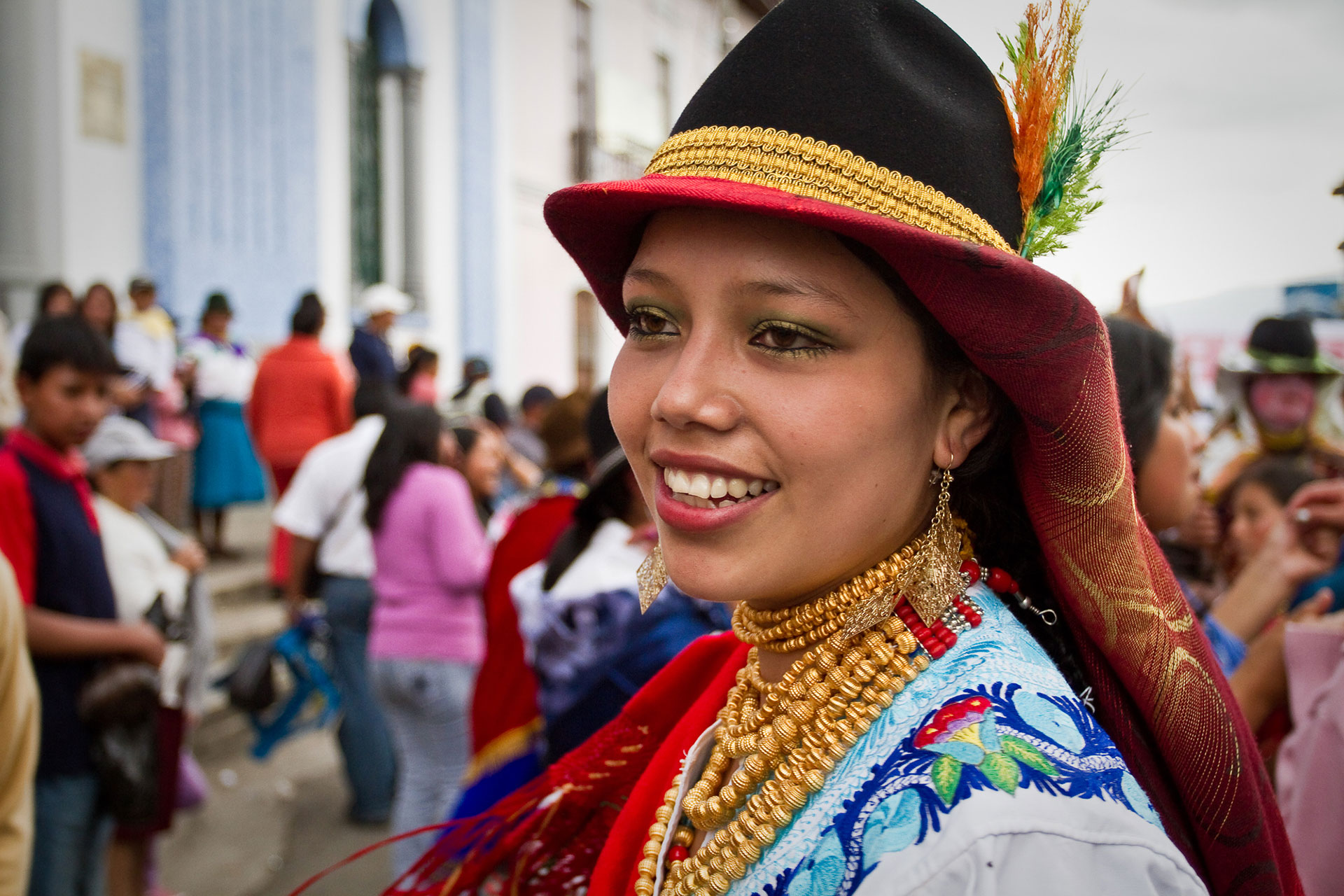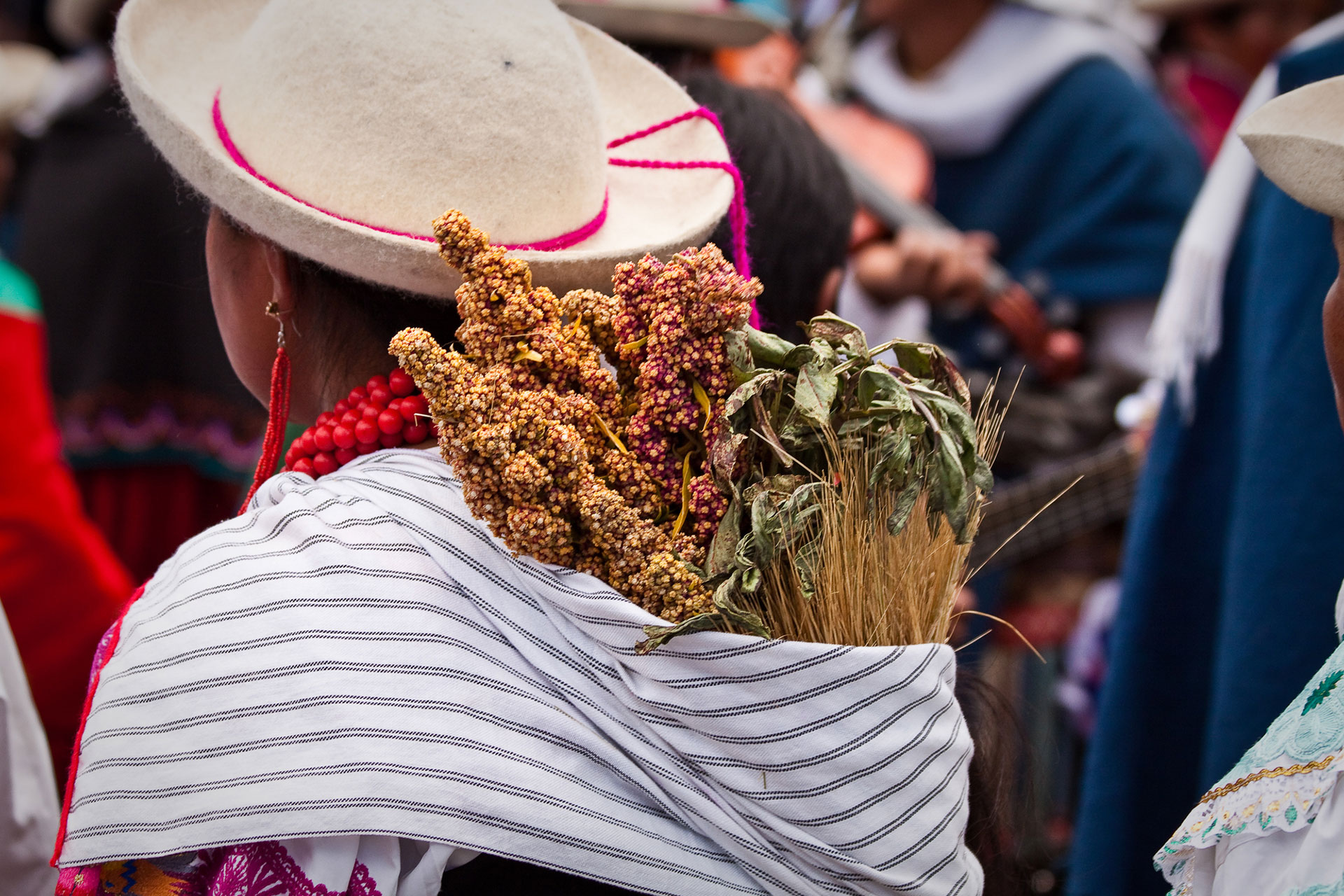The Inti Raymi is a traditional festival that is celebrated in countries across the Andes. Originally a religious ceremony of the Inca Empire, celebrated in honor of the god Inti (the Quechuan word for sun), it is held on June 22 in Ecuador and June 24 in Perú, during the summer solstice in South American countries north of the equator, and during the winter solstice in those countries south of the equator. It marks the new year in the ancient Inca calendar.
During the time of the Inca Empire, the Inti Raymi was the most important of the four main ceremonies celebrated in Cusco, seat of the empire. It lasted nine days and involved dances, processions, and animal sacrifice as a way to thank the gods and ensure a good harvest season. Spanish colonizers and priests, upon arriving in South America and conquering the Inca Empire, banned the ceremony along with many other Inca religious practices, and it was not officially celebrated again until a historical reconstruction was directed in Peru in 1944.
In Ecuador, the Inti Raymi is celebrated throughout the country. Every province celebrates the festival in a different way, depending on the traditions of the indigenous people that live in each (though every festival revolves around the sun). Besides being a harvest festival, the celebration of the Inti Raymi allows its celebrants to get in touch with an indigenous identity that was suppressed for centuries and provides indigenous Ecuadorians with a time of unity and pride toward their culture and their heritage.
The primary activities that take place during the Ecuadorian Inti Raymi are spiritual and involve purification in rivers and under waterfalls, as well as various forms of cultural expression, such as dance, costumes, and the enjoyment of traditional gastronomy. Many of the festivities surrounding Inti Raymi also incorporate elements of the Spanish Catholicism which was imported by Spanish colonizers and which was used to supplant much of the traditional native religion. In Ecuadorian cities such as Cayambe, Otavalo, and Cotacachi, the Catholic holidays for St. Peter and St. Paul are celebrated at the same time as the Inti Raymi. Other aspects of the Inti Raymi express the historical protestations and rebellion of the indigenous people against Catholicism.
While most expressions of the Inti Raymi are colorful, loud, and fun, there is one place in the highlands where the celebration takes on a more solemn tone. This more serious ceremony takes place at an archeological complex known as the Cochasquí Pyramids. Covered by mounds of earth, these pyramids are mere meters away from the equatorial line, and are believed to be proof that the historical indigenous inhabitants of the area were able to calculate the location of the “middle of the world” without the use of modern scientific tools. The Inti Raymi serves as both a celebration of the changing seasons and a reminder of the breadth and depth of the ancient roots of the indigenous societies that populate Ecuador to this day.




